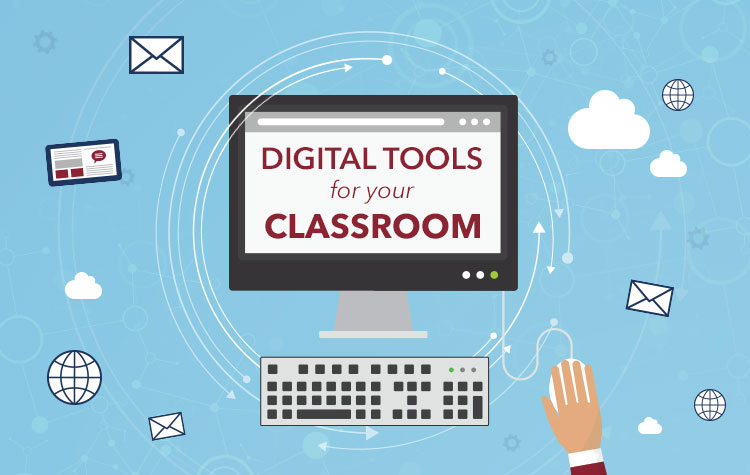The integration of digital tools into educational environments has fundamentally transformed how students engage with learning materials, track academic progress, and develop essential skills. This technological evolution continues to reshape educational practices across institutional levels, from primary schools through advanced graduate programs. As digital natives enter higher education, their expectations for technological integration in learning experiences have catalyzed further innovations in educational technology.
The Digital Transformation of Learning Environments
Today’s educational landscape bears little resemblance to classrooms of previous generations. Interactive learning management systems have replaced static syllabi, collaborative cloud-based platforms have superseded isolated desktop applications, and multimedia resources have expanded beyond traditional textbooks. This digital ecosystem creates new possibilities for engagement while introducing novel challenges for both students and educators.
The most effective integration of these technologies requires pedagogical expertise. An experienced teacher recognizes that technology serves as a means rather than an end in educational contexts, selecting and implementing digital tools based on their alignment with specific learning objectives rather than novelty alone. This discernment helps students navigate the expanding universe of educational technology while maintaining focus on substantive learning outcomes.
Among the most practical digital tools for college students, the gpa calculator for college exemplifies how technology can demystify academic systems and empower students with actionable information. These calculators transform abstract grading policies into concrete scenarios, allowing students to understand how current and future performance affects their academic standing. This transparency supports more strategic approaches to course selection, study prioritization, and academic planning.
Evolution of Educational Technology
Educational technology has evolved through distinct phases reflecting broader technological developments and changing pedagogical approaches. Early computer-assisted instruction in the 1960s and 1970s focused primarily on drill-and-practice applications, reflecting behaviorist learning theories dominant in that era. These systems offered unprecedented standardization but limited personalization or higher-order engagement.
The emergence of personal computing in the 1980s and 1990s expanded possibilities for interactive learning through multimedia CD-ROMs and early simulation programs. These technologies introduced greater visual and interactive elements to educational content, though still primarily in self-contained, offline environments with limited adaptivity to individual learners.
The internet revolution fundamentally transformed educational technology by enabling unprecedented connectivity, resource sharing, and communication capabilities. Web-based learning resources, online courses, and digital collaboration tools expanded educational possibilities beyond geographical limitations, creating global learning communities and resource repositories accessible from anywhere with internet connectivity.
Mobile technology further accelerated this transformation by untethering learning from fixed locations and schedules. Smartphones and tablets enabled learning to occur seamlessly across contexts, with educational applications providing just-in-time information, practice opportunities, and progress tracking. This ubiquitous access has blurred traditional boundaries between formal and informal learning environments.
Categories of Educational Technology
Learning management systems (LMS) serve as central infrastructure for modern educational environments, providing integrated platforms for content delivery, assignment submission, discussion forums, and grade tracking. These systems create digital spaces where course communities develop and administrative functions merge with pedagogical activities, streamlining workflows for both students and instructors.
Adaptive learning platforms represent a significant advancement in personalizing educational experiences. These systems employ sophisticated algorithms to analyze student performance patterns, identify knowledge gaps, and adjust content presentation accordingly. This dynamic responsiveness enables more efficient learning pathways tailored to individual needs rather than one-size-fits-all approaches.
Collaborative tools facilitate group projects, peer review processes, and knowledge co-construction activities that reflect contemporary workplace practices. Cloud-based document creation platforms, shared annotation tools, and synchronous editing capabilities enable new forms of intellectual partnership that transcend physical proximity requirements while developing essential teamwork skills.
Assessment technologies have evolved beyond simple multiple-choice quizzing to include sophisticated performance evaluation tools, plagiarism detection systems, and automated feedback mechanisms. These technologies support more frequent, lower-stakes assessment opportunities that provide ongoing feedback rather than concentrating evaluation in high-pressure examination events.
Academic Performance Tracking Tools
Digital grade books have transformed how students monitor their academic progress, providing real-time visibility into assignment scores, feedback, and overall course standing. This transparency contrasts sharply with previous generations’ experience of uncertainty between major graded events, enabling more responsive adjustment of study strategies based on continuous performance data.
Degree audit systems help students navigate increasingly complex graduation requirements by automatically tracking progress toward degree completion. These systems identify remaining requirements, highlight prerequisite relationships, and sometimes offer “what-if” scenarios for exploring alternative academic pathways. This functionality reduces advising bottlenecks while empowering students with greater autonomy in academic planning.
Early alert systems represent an important emerging category that leverages learning analytics to identify struggling students before traditional grading milestones. By analyzing patterns in system logins, assignment submissions, and early assessment performance, these tools enable proactive interventions when support might prove most effective rather than after failure has occurred.
Academic planning applications help students map multisemester pathways that optimize course sequencing, balance workloads across terms, and ensure timely completion of prerequisites. These tools support more strategic approaches to degree progression, potentially reducing time-to-degree and associated costs while ensuring academic preparation for each successive challenge.
Impact on Learning Processes
Digital tools have transformed how students interact with educational content, shifting from primarily passive consumption toward more interactive engagement. Multimedia presentations, simulations, interactive diagrams, and practice activities with immediate feedback create richer learning experiences that address diverse learning preferences and maintain attention more effectively than traditional text-based materials alone.
Information literacy development has gained importance as students navigate expanding digital resource landscapes. The ability to locate, evaluate, and synthesize information from diverse digital sources represents an essential competency rather than a supplementary skill. Educational technologies increasingly incorporate scaffolding for these processes, helping students develop discernment in an information-saturated environment.
Feedback mechanisms have evolved substantially through educational technology integration. Automated systems provide immediate response to practice activities, peer review platforms facilitate structured evaluation from classmates, and digital annotation tools enable more specific, contextual instructor comments. These diverse feedback channels support more iterative improvement processes than end-point evaluation alone.
Self-regulated learning skills develop through interaction with digital learning environments that require greater autonomy than traditional classroom settings. Time management tools, progress tracking features, and metacognitive prompts embedded in educational technologies help students develop these essential capabilities, though technology alone cannot substitute for intentional cultivation of these skills.
Accessibility and Inclusion Dimensions
Digital tools have significantly expanded educational access for students with disabilities through accommodations including screen readers, captioned videos, keyboard navigation alternatives, and text-to-speech functions. Universal design principles increasingly inform educational technology development, creating more accessible learning experiences for diverse users rather than requiring retrofitted accommodations.
Socioeconomic barriers to educational technology present ongoing challenges despite expanded access. The “digital divide” encompasses not only hardware and connectivity inequities but also disparities in digital literacy, technical support availability, and conducive environments for technology-mediated learning. Institutional support programs increasingly address these multidimensional aspects rather than focusing solely on device provision.
Language support technologies have reduced barriers for multilingual students through integrated translation tools, glossary functions, and multimedia resources that support comprehension through multiple channels. These technologies help non-native speakers access complex academic content while developing discipline-specific language capabilities alongside subject matter knowledge.
Cultural responsiveness in educational technology remains an evolving challenge. Technologies developed primarily within Western educational contexts may embed cultural assumptions that disadvantage students from different backgrounds. Increasing awareness of these issues has prompted greater attention to inclusive design practices and customization options that accommodate diverse cultural perspectives.
Challenges and Limitations
Privacy concerns have intensified as educational technologies collect increasingly detailed data about student behaviors, preferences, and performance patterns. Questions regarding appropriate data collection, storage duration, sharing limitations, and student consent present complex ethical challenges for institutions implementing these systems. Balancing analytical benefits against privacy protection requires thoughtful institutional policies and practices.
Digital distraction presents another significant challenge as learning environments integrate more technology. Research indicates that multitasking impairs learning outcomes, yet digital devices create constant temptation for attention switching. Developing effective attention management strategies has become an essential meta-skill for students navigating technology-rich educational environments.
Technology dependence creates potential vulnerabilities when systems fail or access becomes interrupted. Contingency planning for technical difficulties remains important even as system reliability improves. Additionally, essential digital literacy skills may receive insufficient development when automated tools handle processes that previously required manual execution and deeper understanding.
The rapid evolution of educational technologies creates implementation challenges for institutions with limited resources for continuous updates, training, and support. Faculty development needs have expanded significantly to include not only technical proficiency but also pedagogical approaches that effectively leverage technological capabilities. These resource requirements create potential inequities between well-resourced and financially constrained institutions.
Future Directions
Artificial intelligence applications in education promise increasingly sophisticated personalization through natural language processing, machine learning, and adaptive systems that continuously refine their responses to individual learners. These technologies potentially offer individualized tutoring at scale, though significant challenges remain in capturing the nuanced judgment of experienced human educators.
Augmented and virtual reality technologies create immersive learning experiences that were previously impossible, particularly valuable for spatial concepts, procedural skills, and scenarios too dangerous or expensive for physical implementation. These technologies continue becoming more accessible as hardware costs decrease and development tools simplify content creation.
Blockchain credentialing offers potential solutions to transcript security, skill verification, and micro-credential documentation challenges. These systems provide tamper-proof records while potentially enabling more granular representation of competencies than traditional degree documentation alone, supporting more flexible educational pathways and lifelong learning documentation.
Integration of physical and digital learning environments continues evolving through Internet of Things devices, environmental sensors, and location-aware applications that bridge artificial separations between online and offline experiences. These technologies create seamless learning ecosystems rather than compartmentalized physical and digital spaces, reflecting the integrated nature of contemporary professional environments.
Implementation Considerations
Effective educational technology implementation requires strategic planning rather than ad hoc adoption. Institutions must align technology decisions with educational missions, student needs, and pedagogical approaches rather than implementing technology for its own sake. This alignment ensures that digital tools enhance rather than distract from core educational purposes.
Faculty development represents a critical success factor for educational technology initiatives. Technical training alone proves insufficient; educators need opportunities to reconceptualize teaching approaches in light of technological possibilities, develop appropriate assessment methods for technology-enhanced learning, and create effective scaffolding for students navigating digital environments.
Student support systems must evolve alongside technology implementation. Technical assistance, digital literacy development, and guidance for effective technology utilization require institutional investment beyond the technologies themselves. These support structures prove particularly important for non-traditional students who may have less prior experience with educational technologies.
Continuous evaluation of educational technology effectiveness represents another essential implementation component. Data analytics capabilities within many systems offer unprecedented opportunities to assess impact on learning outcomes, identify usage patterns, and refine implementation approaches based on evidence rather than assumptions about effectiveness.
Conclusion
Digital tools have fundamentally transformed educational environments, creating new possibilities for personalization, engagement, and academic support. These technologies continue evolving rapidly, requiring ongoing adaptation from students, educators, and institutions. The most successful implementations maintain focus on substantive learning outcomes while leveraging technological capabilities to enhance educational experiences.
The future educational landscape will likely feature increasing integration of physical and digital learning environments, more sophisticated personalization through artificial intelligence, expanded immersive learning experiences, and more flexible credentialing systems. Navigating these developments effectively requires balanced perspective on technology’s role as enabler rather than driver of educational transformation.
As digital natives progress through educational systems with expectations for seamless technological integration, institutions face both opportunities and challenges in meeting these expectations while maintaining focus on enduring educational values. The technologies themselves will continue evolving, but the fundamental goal remains unchanged: supporting effective, engaging learning experiences that prepare students for future challenges in increasingly digital professional and civic environments.
















